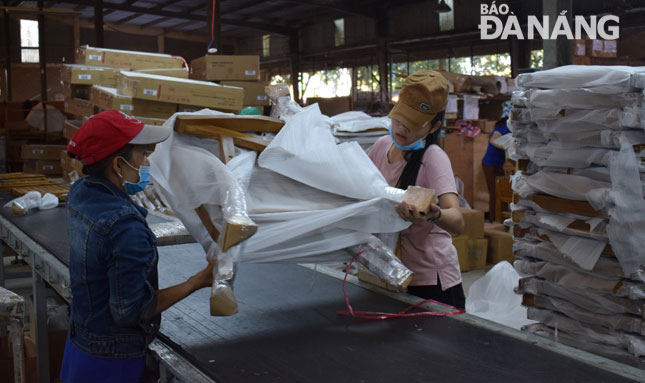Businesses increase use of domestic inputs
Many domestic businesses are taking initiatives to increase the use of domestic inputs instead of heavily relying on imports from foreign countries worldwide, with the intention of reducing their production costs and enhancing the competitiveness of their own products.
 |
| Many domestic businesses have focussed on increasing the use of domestic raw materials to reduce their production costs and enhance the competitiveness of their own products. |
As a pioneer in using domestic raw materials in the city’s textiles and garments industry, the Hoa Tho Textiles and Garments Corporation has developed a yarn factory with a total annual capacity of 20,000 tonnes.
Given such high production capacity, the company has ensured the stability of raw material sources for production, and reduced the total proportion of the company’s inputs imported from foreign countries to only about 50%.
In the past, the majority of the company’s input materials were from China because of their eye-catching colours, diversified designs, and low prices.
Ms Hoang Thuy Oanh, the Deputy General Director of the Corporation remarked, in the coming time, her company will import new raw materials from such Asian countries such as India, Thailand and Indonesia so as to void the possibility of over-reliance on only one market which might result in potential economic risks.
Over recent years, in reality, many Vietnamese agricultural product processing and export businesses have suffered huge losses because of Chinese traders’ bad bargains and their decisions to temporarily stop importing Vietnamese products.
In a similar vein, the city-located Vinafor Da Nang Wood Processing Enterprise, one of the leading outdoor furniture manufacturers and exporters in Central Viet Nam, has also focused on developing its own vast green acacia plantations in some such neighbouring localities as Thua Thien-Hue, and Quang Nam.
However, the company still uses a large volume of input materials from Ho Chi Minh City and Quy Nhon to meet the growing production demands. Vinafor, therefore, plans to continue seeking new raw material sources in the coming time.
 |
| Many enterprises plan to continue looking for new raw material sources in the coming time. |
Mr Phan Hai, the Director of the BQ Shoe Company, pointed put to the fact that most of the footwear materials are imported from China and other Asian countries. Some footwear producers say they have resorted to use Chinese materials as those locally made fail to meet their standards in terms of type and design.
In Da Nang, BQ has actively pioneered in gradually making a shift to using domestic raw materials, instead of utilising those sourced from China as previously. Up to now, 100% of the BQ products are produced at home from domestic raw materials.
Meanwhile, the municipal Department of Industry and Trade and other relevant agencies has launched many meaningful events to raise the public's awareness about increasing the consumption of high-quality Vietnamese goods in active response to the city’s implementation of the ‘Vietnamese People Give Priority to Using Vietnamese Goods’ campaign.
The move aims at inspiring local manufacturers to further enhance their production and business capacity, and creating a healthy business environment for home market as well.